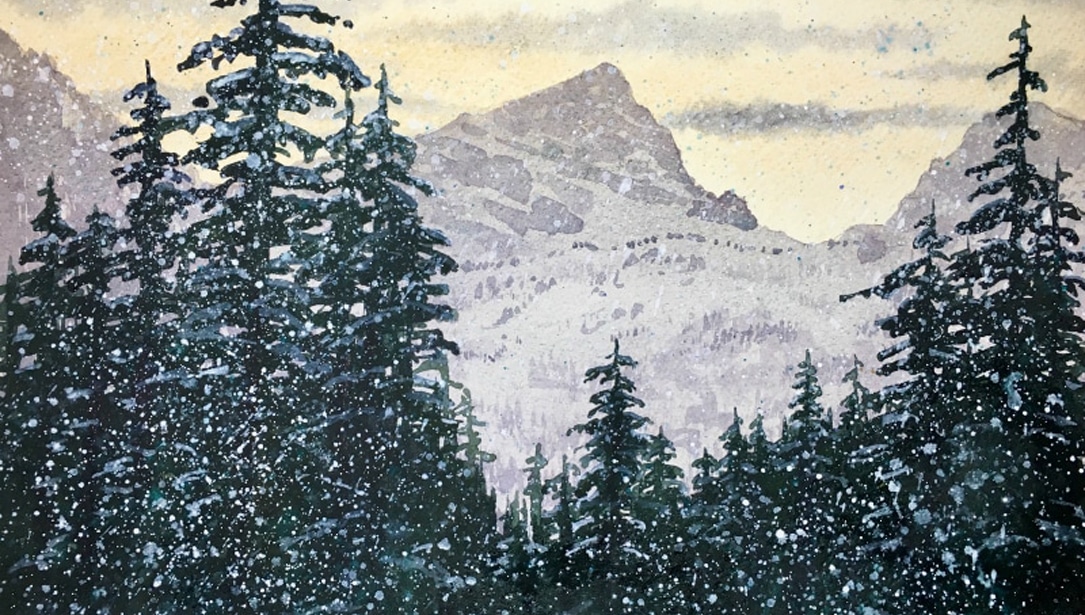Painted with a limited palette of just these three colors, this pretty little rose leaf has lots of personality with all the subtle shades of green, pink and yellow.
Used wisely, these three can make many shades you might see in nature, ranging from soft pinks a glowing oranges to more natural greens and earth tones.
- Dampen your leaf sketch with clear water and then drop in some Hansa Yellow Light.
- Add touches of Phthalo Turquoise into the yellow to create fresh warm green. Vary the placement based on the light and shadow that you perceive in the leaf.
- Keep the outer edges clearly serrated, which gives the rose leaf its distinctive appearance.
- Drop in a stronger density of the turquoise and enjoy watching it flow into the wet areas. It’s so much fun to let your colors mix on the paper!
- While the paint is still wet, add dots of yellow and watch as it pushes back the pigment on the lower layer. Certain pigments have a fair amount of energy to inspire us!
- Build darker tones bit by bit with the turquoise. Keep the strokes loose and playful – the leaf outline is a general guide, but don’t get too lost in the detail.
- While it’s all still wet, brush a little Quinacridone Rose at the top point of the leaf and see how it interacts with the turquoise.
- Darken both sides of the stem in the center. Mixing the rose and turquoise creates a beautiful dark brown for this and other accents.
- Paint the stem with Quinacridone Rose.
- Use a clean, wet brush to lift out thin lines on the leaf to create some veining patterns while the paint is still damp.
- Accent more areas with a touch of dark brown as desired for dimension.







